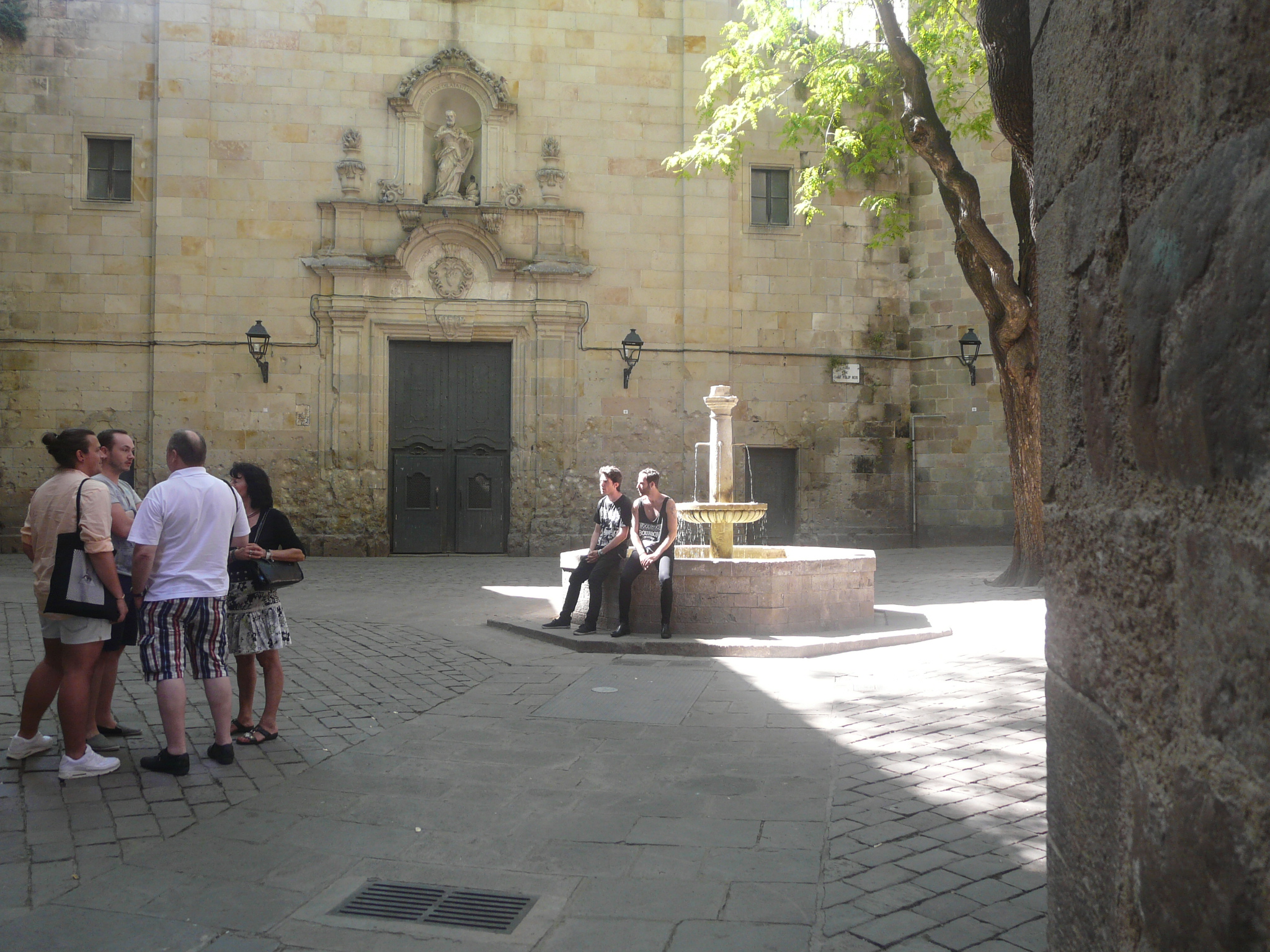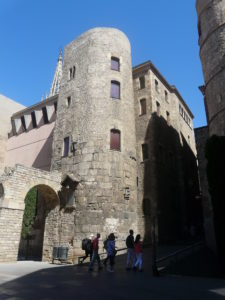

I’m sure that if you’re visiting Barcelona you’ve already visited (or you’re planning to) the Cathedral square. The cathedral is a must-see, and you probably would have taken the narrow street that connects this square with another one: Sant Jaume, where the Town Hall and the Generalitat Palace buildings are. But perhaps you missed one of the most beautiful corners in the area, or unless you specifically looked for them you may have missed a couple of details or stories in the area… Do you want to fill in the gaps?
Table of Contents


Continue along Bishop Street until you find a small square: Garriga and Bachs. There, turn right at the second street before going on (Sant Sever street) and from there take the first street to the right. You’ll find Sant Felip Neri, a beautiful and peaceful square with a fountain in the middle and some historical buildings. It’s often a bit busy, but I’m sure you’ll feel as if transported to the middle ages. This square is featured in the film The Perfume and it’s also the location of a video of the band Evanescence (My Immortal). Notice the marks in the façade of
If you leave the square and go back to Sant Sever street,
Retrace your steps and go back to Bishop Street, where you’ll see lots of tourists taking photographs at the famous bridge. Many of them may be surprised to find out that the bridge is not that old. It was, in fact, built in 1928 by Joan Rubió i Bellver, one of Gaudi’s disciples, and designed in Gothic style just to fit with the rest of the area. There are
Continue under the bridge (any which way you want, that’s your choice) and you will end up in Sant
And our short tour ends here. From Sant Jaume square you can take Ferran street and go to the Rambla or Jaume I street and go to Via Laietana and the Born area.
Remember that ShBarcelona offers rentals in the Gothic Quarter, perfect for exploring Sant Felip square, the Cathedral and other great areas around Barcelona’s old town.
Barcelona’s Mediterranean climate, with increasingly warmer and longer summers, makes air conditioning an essential feature…
Maybe you're thinking about selling a property or you've just inherited one or more real…
Do you enjoy strolling among trees and plants, away from the hustle and bustle of…
If you are planning to move to Barcelona for a few months or permanently, one…
ShBarcelona establishes itself as the leading agency within the Apialia Eixample Group, reaffirming its position…
Are you going to visit Barcelona this 2025? The vibrant Catalan capital once again becomes…